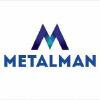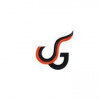Quality Assurance Quality Control Engineer
70+ Quality Assurance Quality Control Engineer Interview Questions and Answers

Asked in Bisleri

Q. Why is a carbon filter used in a Water Treatment Plant (WTP)?
Carbon filters are used in WTP to remove organic compounds, chlorine, and other impurities from water.
Carbon filters are effective in removing organic compounds, chlorine, and other impurities from water.
They are commonly used in water treatment plants (WTP) to improve the taste and odor of water.
Carbon filters can also remove certain heavy metals and volatile organic compounds (VOCs) from water.
They are often used as a final step in the water treatment process to ensure high...read more
Asked in Jbm Nmpl

Q. What is yield point and draw the graph on the paper
Yield point is the stress at which a material begins to deform plastically.
Yield point is the point on a stress-strain curve where the material starts to deform plastically.
It is the stress at which the material no longer behaves elastically.
The yield point is important in determining the strength and ductility of a material.
The yield point can be determined by plotting a stress-strain curve and finding the point where the curve starts to deviate from a straight line.
Examples...read more
Quality Assurance Quality Control Engineer Interview Questions and Answers for Freshers

Asked in Bisleri

Q. What are the differences between ozonation and chlorination?
Ozonation is a chemical process that uses ozone gas to disinfect water while chlorination uses chlorine gas.
Ozonation is more effective in removing certain contaminants like pesticides and pharmaceuticals.
Chlorination can produce harmful byproducts like trihalomethanes.
Ozonation is more expensive than chlorination.
Chlorination is more commonly used in water treatment plants.
Ozonation is a faster process than chlorination.

Asked in NALUX Electronics

Q. What are passive and active electrical components?
Passive and active electrical components are two types of components used in electronic circuits.
Passive components do not require an external power source to function, such as resistors, capacitors, and inductors.
Active components require an external power source to function and can amplify or control the electrical signal, such as transistors, diodes, and integrated circuits.
Passive components are typically used to control the flow of current or store energy, while active c...read more

Asked in Bisleri

Q. How can you reduce customer complaints about returned jars?
To reduce customer complaints in market return jars, we can improve the quality control process and implement better packaging.
Conduct thorough quality checks before packaging and shipping the jars
Use high-quality packaging materials to prevent breakage and contamination
Implement a system for tracking and addressing customer complaints
Regularly review and improve the manufacturing process to prevent defects
Provide clear instructions for proper storage and handling of the prod...read more

Asked in Mayfair Housing

Q. What corrective actions would you recommend to prevent similar defects from occurring in the future?
To prevent similar defects in the future, I would recommend implementing root cause analysis, updating procedures, providing additional training, and conducting regular audits.
Conduct a thorough root cause analysis to identify the underlying reasons for the defects.
Update procedures and work instructions to address the root causes and prevent recurrence.
Provide additional training to employees on proper procedures and quality standards.
Implement regular audits and inspections...read more
Quality Assurance Quality Control Engineer Jobs




Asked in Bisleri

Q. What legal bodies are needed for PDW manufacturing?
Legal bodies for PDW manufacturing include FDA, EMA, and other regulatory agencies.
FDA (Food and Drug Administration) in the US
EMA (European Medicines Agency) in Europe
Other regulatory agencies in different countries
Compliance with Good Manufacturing Practices (GMP) and other quality standards

Asked in Medhaj Techno Concept

Q. What is the relationship between the Characteristic Strength and Water Cement Ratio of Concrete?
The characteristic strength of concrete is influenced by the water-cement ratio.
The water-cement ratio is the ratio of the weight of water to the weight of cement used in the concrete mix.
A lower water-cement ratio generally results in higher characteristic strength.
A higher water-cement ratio can lead to lower characteristic strength and reduced durability.
The water-cement ratio affects the hydration process and the overall density and strength of the concrete.
For example, a...read more
Share interview questions and help millions of jobseekers 🌟


Asked in Mayfair Housing

Q. What are the benefits of implementing a quality management system (QMS) in a construction company?
Implementing a QMS in a construction company can lead to improved quality, efficiency, and customer satisfaction.
Ensures compliance with industry standards and regulations
Reduces rework and waste, leading to cost savings
Enhances communication and collaboration among project teams
Improves overall project management and scheduling
Increases customer satisfaction and loyalty
Helps in identifying and addressing potential risks and hazards
Provides a framework for continuous improvem...read more

Asked in Medhaj Techno Concept

Q. What is the difference between the workability and durability of concrete?
Workability refers to the ease of handling and placing concrete, while durability refers to its ability to withstand environmental and service conditions.
Workability is influenced by factors such as water content, aggregate size, and admixtures.
Workable concrete can be easily mixed, transported, and placed without segregation or excessive bleeding.
Durability is affected by factors like the water-cement ratio, cement content, and curing conditions.
Durable concrete can resist d...read more
Asked in Tessy Engineering and Enterprises

Q. What are the essential qualities of a QA/QC engineer in the welding sector?
Essential qualities of a QA QC engineer in welding sector
In-depth knowledge of welding codes and standards
Ability to interpret welding drawings and specifications
Strong attention to detail and ability to identify defects
Excellent communication and documentation skills
Experience in non-destructive testing techniques
Knowledge of welding processes and equipment
Ability to work collaboratively with other departments
Strong problem-solving skills
Understanding of safety regulations a...read more
Asked in ASL Enterprises

Q. What is 7 QC tool and how you prevent quality control tool?
The 7 QC tools are basic quality control tools used to analyze and solve quality-related issues in manufacturing processes.
The 7 QC tools include check sheets, control charts, histograms, Pareto charts, scatter diagrams, cause-and-effect diagrams, and flowcharts.
These tools help in identifying and solving quality problems in a systematic manner.
For example, a control chart can be used to monitor a process over time and detect any variations that may affect quality.
Regular tra...read more

Asked in Medhaj Techno Concept

Q. What is the density of DI, MS, and HDPE pipes?
The density of DI, MS, and HDPE pipes varies depending on their composition and manufacturing process.
Density is a measure of mass per unit volume.
DI (Ductile Iron) pipes have a density of approximately 7.2 g/cm³.
MS (Mild Steel) pipes have a density of around 7.85 g/cm³.
HDPE (High-Density Polyethylene) pipes have a density ranging from 0.93 to 0.97 g/cm³.
The density of pipes is an important factor in determining their strength and suitability for different applications.

Asked in Medhaj Techno Concept

Q. What is the pressure range of DI and HDPE pipes?
The pressure range of DI and HDPE pipes varies depending on their size and application.
The pressure range of DI (Ductile Iron) pipes typically ranges from 150 psi to 350 psi.
HDPE (High-Density Polyethylene) pipes have a pressure range of 100 psi to 300 psi.
The pressure rating of pipes also depends on their diameter and wall thickness.
For example, a 4-inch DI pipe with a wall thickness of 0.25 inches may have a pressure rating of 250 psi.
It is important to consult the manufact...read more

Asked in NALUX Electronics

Q. How and when do you use a resistor?
A resistor is used to limit the flow of electric current in a circuit.
Resistors are used to control the amount of current flowing through a circuit.
They are commonly used to protect components from excessive current.
Resistors are also used to divide voltage in a circuit.
They can be used to create voltage drops or to adjust signal levels.
Resistors are used in various electronic devices such as amplifiers, radios, and computers.
Asked in Aiemdet Engineers

Q. Why is eingine twining? Why seat in eingine twining time
Engine twining occurs due to improper timing of the engine's components, leading to reduced performance and potential damage.
Engine twining can occur when the timing belt or chain is not properly aligned with the camshaft and crankshaft.
This misalignment can result in the valves opening and closing at the wrong time, causing the engine to run inefficiently.
Seat in engine twining time refers to the process of adjusting the timing of the engine components to ensure proper opera...read more
Asked in Kanin India

Q. 1)Definition of quality. 2)Moulding defect 3)SPC 4)4M 5)CAPA 6)How to control moulding defacts
Quality assurance ensures products meet standards; moulding defects are flaws in manufacturing; SPC monitors processes for consistency.
1. Definition of Quality: Quality refers to the degree to which a product meets specified requirements and customer expectations.
2. Moulding Defect: Common moulding defects include warping, sink marks, and flash, which can affect product performance and aesthetics.
3. SPC (Statistical Process Control): A method of quality control using statisti...read more
Asked in Aiemdet Engineers

Q. What are the differences between a 2-cylinder engine and a 4-cylinder engine?
2-cylinder engines are typically smaller, lighter, and more fuel efficient, while 4-cylinder engines offer more power and smoother operation.
2-cylinder engines are often used in smaller vehicles like motorcycles and scooters for their compact size and efficiency.
4-cylinder engines are commonly found in larger vehicles like cars and trucks for their power and smoother operation.
4-cylinder engines tend to have better balance and less vibration compared to 2-cylinder engines.
2-c...read more

Asked in Irclass Systems And Solutions

Q. What is the difference between QA and QC in Civil Quality Engineering?
QA focuses on preventing defects, while QC emphasizes identifying defects in civil engineering projects.
QA (Quality Assurance) involves processes and procedures to ensure quality standards are met throughout the project lifecycle.
QC (Quality Control) is the inspection and testing of materials and workmanship to identify defects after they occur.
Example of QA: Developing a quality management plan for a construction project to ensure compliance with regulations.
Example of QC: C...read more
Asked in Aleastur Group

Q. How do you maintain quality as per customer requirements?
I ensure quality by aligning processes with customer specifications, conducting regular audits, and fostering continuous improvement.
Understand customer requirements through detailed discussions and documentation.
Implement a robust quality management system (QMS) to track compliance.
Conduct regular training sessions for the team to ensure everyone is aligned with quality standards.
Utilize tools like Six Sigma or Lean methodologies to identify and eliminate defects.
Perform reg...read more
Asked in Aleastur Group

Q. How do you maintain safety protocols in your workplace?
I ensure safety protocols by implementing training, regular audits, and fostering a culture of safety among all team members.
Conduct regular safety training sessions for all employees to ensure they understand protocols.
Implement a system for reporting safety hazards, encouraging employees to speak up.
Perform routine safety audits and inspections to identify and rectify potential risks.
Use personal protective equipment (PPE) as required, such as gloves and masks in hazardous ...read more
Asked in Aiemdet Engineers

Q. What is the degree of cylinder rotation in an engine?
Rotating for cylinder degree in engine refers to the angle at which the cylinder rotates during the engine's operation.
Rotating for cylinder degree in engine is related to the movement of the piston within the cylinder.
It is measured in degrees of rotation, indicating the position of the piston within the cylinder.
The degree of rotation affects the timing of the engine's combustion process.
Properly timed rotation ensures efficient engine performance and power output.

Asked in Bisleri

Q. What legal parameters need to be checked on a bottle label?
Legal parameters for bottle labels ensure compliance with regulations and consumer safety.
Product name: Must clearly state the product being sold, e.g., 'Spring Water'.
Ingredients list: All ingredients must be listed in descending order by weight, e.g., 'Water, Minerals'.
Net quantity: Must indicate the volume or weight of the contents, e.g., '500 mL'.
Manufacturer information: Includes name and address of the manufacturer or distributor.
Expiration date: Required for perishable...read more

Asked in Mayfair Housing

Q. Explain the concept of continuous improvement in quality management.
Continuous improvement in quality management involves constantly seeking ways to enhance processes, products, and services.
Continuous improvement is a fundamental principle of quality management that focuses on making incremental changes to processes, products, and services to achieve better results.
It involves identifying areas for improvement, setting goals for enhancement, implementing changes, and monitoring the outcomes to ensure effectiveness.
Examples of continuous impr...read more
Asked in Jbm Nmpl

Q. 4stroke engine and disel Otto cycle explain
4-stroke engine and diesel Otto cycle explained
A 4-stroke engine completes a cycle in four strokes: intake, compression, power, and exhaust
Diesel Otto cycle is a thermodynamic cycle used in diesel engines
Diesel Otto cycle consists of four processes: intake, compression, power, and exhaust
The main difference between gasoline and diesel engines is the way fuel is ignited
Gasoline engines use spark plugs to ignite the fuel, while diesel engines use compression to ignite the fuel

Asked in Bisleri

Q. What are the CCP and OPRP in the PDW line?
CCP and OPRP are critical control points and operational prerequisite programs respectively in PDW line.
CCP is a point in the process where control can be applied to prevent, eliminate, or reduce a hazard to an acceptable level.
OPRP is a prerequisite program that controls a significant hazard that is not controlled by the CCP.
Examples of CCP in PDW line are pasteurization, filtration, and bottling.
Examples of OPRP in PDW line are cleaning and sanitation, pest control, and mai...read more
Asked in Aiemdet Engineers

Q. What is the difference between a spark plug and an injector?
Spark plugs are used in gasoline engines to ignite the air-fuel mixture, while injectors are used to spray fuel into the combustion chamber.
Spark plugs create a spark to ignite the air-fuel mixture in gasoline engines.
Injectors are used to spray fuel into the combustion chamber.
Spark plugs are typically found in gasoline engines, while injectors are used in both gasoline and diesel engines.
Spark plugs require high voltage to create a spark, while injectors require high pressu...read more

Asked in Irclass Systems And Solutions

Q. How do you ensure quality in concrete works?
Ensuring quality in concrete works involves rigorous testing, monitoring, and adherence to standards throughout the construction process.
Conduct thorough material testing: Test aggregates, cement, and water for quality before mixing.
Implement mix design: Use a well-defined concrete mix design to achieve desired strength and durability.
Perform slump tests: Regularly check the workability of fresh concrete using slump tests to ensure proper consistency.
Monitor curing processes:...read more

Asked in Ebix Payment Services

Q. How many use software related to e-commerce
Many e-commerce companies use software for various functions such as inventory management, order processing, and customer relationship management.
Most e-commerce companies use software for inventory management to track stock levels and optimize supply chain processes.
Order processing software is commonly used to automate the order fulfillment process and streamline operations.
Customer relationship management (CRM) software is essential for managing customer interactions, trac...read more

Asked in Metalman Auto

Q. How does the SAP system work on your end?
SAP system is an enterprise resource planning software that helps manage business operations and customer relations.
SAP system integrates various business functions like finance, HR, sales, and production.
It helps streamline processes, improve efficiency, and provide real-time data for decision-making.
Users can access SAP system through different modules like SAP ERP, SAP CRM, and SAP SCM.
SAP system allows for customization to meet specific business needs.
Examples of SAP modu...read more
Interview Experiences of Popular Companies






Calculate your in-hand salary
Confused about how your in-hand salary is calculated? Enter your annual salary (CTC) and get your in-hand salary


Reviews
Interviews
Salaries
Users










